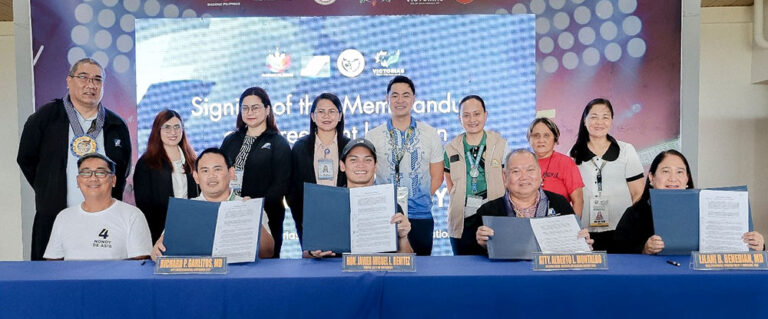CEBU CITY – A proposal to convert the Malacañang sa Sugbo into a national museum is getting popular support after Mayor Edgardo Labella agrees with it, saying, Cebu is a historical and heritage city.
National Museum Chairperson Evangelina Lourdes Bernas sent a letter to Presidential Assistant for the Visayas Michael Din, stating the National Museum’s interest in re-establishing its presence in Cebu by restoring and converting the said structure into a museum.
“It is only fitting for the Queen City of the South to have a national museum as Cebu City is a historical and heritage city,” Labella said, adding, “I agree. I concur en toto, meaning 100 percent. There is a need for us to have a national museum because Cebu City is rich in culture, heritage, and history.”
Labella further explained that the first Spanish settlement was established in Cebu City. “In fact, the first or the oldest street in the country – Colon Street – is in Cebu City. The first Filipino was also baptized in Cebu City in the person of Queen Juana, the wife of Rajah Humabon,” Labella said.
He said the first school in the Philippines was also established in Cebu City – the University of San Carlos, which was then called San Ildefonso College. “These are among the very important factors or reasons why I concur en toto in making that structure (Malacañang sa Sugbo) a national museum,” Labella said.
The Malacañang sa Sugbo, formerly called the Aduana Building, was originally built in 1910 to house the Bureau of Customs in the Port of Cebu. In 2004, former President Gloria Arroyo converted the structure into Malacañang sa Sugbo but it has been idle since the end of her term in 2010. The building was severely damaged by the October 2013 Bohol earthquake which was strongly felt in Cebu.
Labella said he will ask the National Museum to hasten the restoration and conversion of the building so that it will be completed in time for the fifth centennial celebration of Portuguese explorer Ferdinand Magellan’s arrival to the Philippines.
In 1521, Magellan’s expedition arrived in the Philippines, claimed the islands for Spain and was then killed at the Battle of Mactan. Colonization began when Spanish explorer Miguel Lopez de Legazpi arrived from Mexico in 1565 and formed the first Hispanic settlements in Cebu.
“This is very timely and I hope that this can catch up with the fifth centennial commemoration, where we can expect millions of visitors,” Labella said. “Even the (building) design itself bespeaks of the kind of heritage and history that we have in Cebu City.” (Luel Galarpe)
Like Us on Facebook: The Mindanao Examiner
Like Us on Facebook: The Zamboanga Post
Follow Us on Twitter: Mindanao Examine
Read And Share Our News: Mindanao Examiner Website
Mirror Site: Mindanao Examiner Blog
Digital Archives: Mindanao Examiner Digital
Media Rates: Advertising Rates



